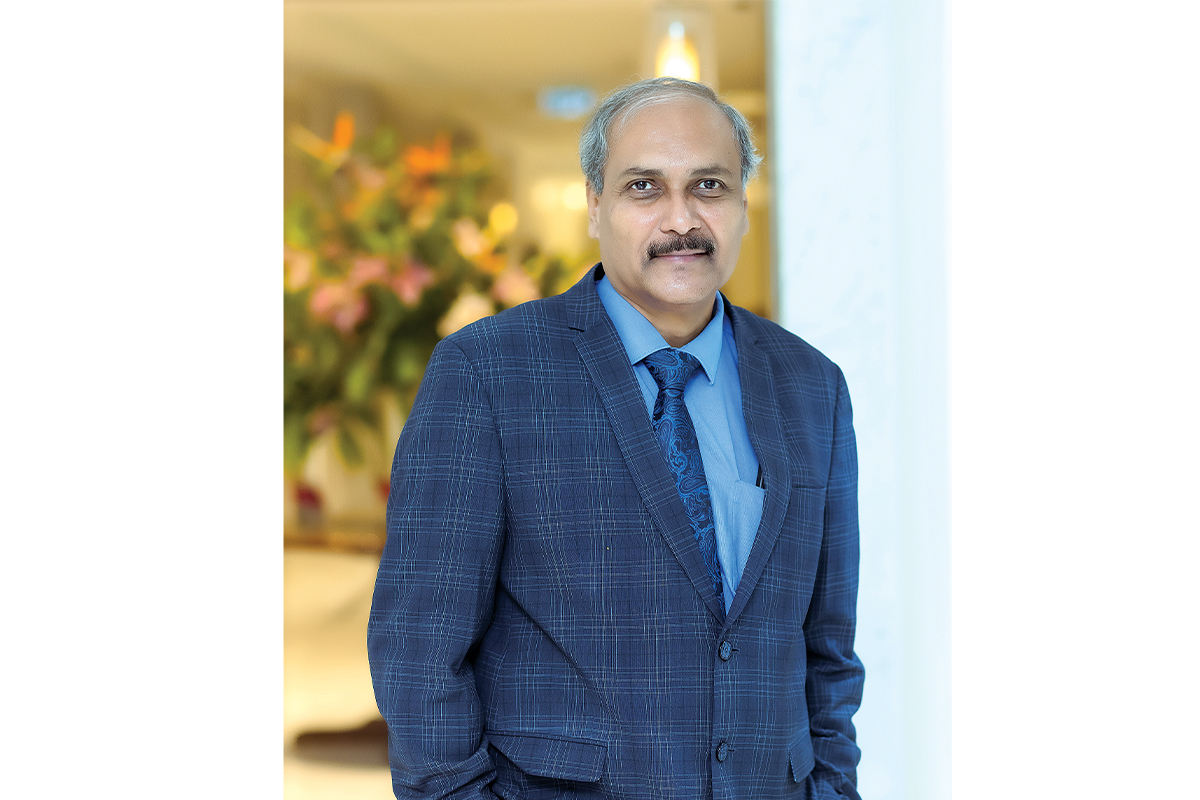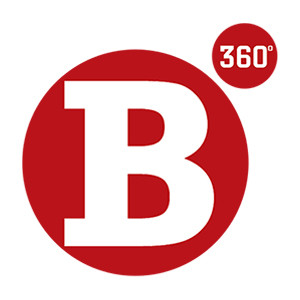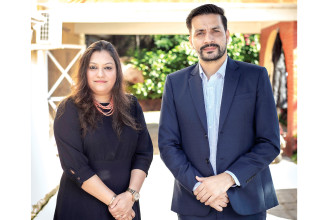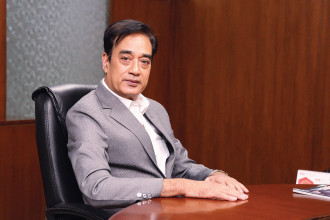
Dr Jeyaraj D Pandian
President, World Stroke Organisation
Telemedicine is truly a game-changer. In acute stroke, time is brain, every minute counts. With tele-stroke systems, doctors can remotely evaluate patients, look at CT scans and advise local healthcare workers on whether to administer thrombolysis or transfer the patient for thrombectomy. But the role of technology does not end with emergency care. Mobile health tools can support rehabilitation by guiding patients through exercises, sending reminders for medications, and even connecting them to physiotherapists or speech therapists through video consultations. For patients living in remote areas where frequent hospital visits are impossible, these tools can mean the difference between dependency and recovery
Dr Jeyaraj D Pandian is a highly respected figure in the world of neurology, with a career dedicated to improving stroke care, particularly in low- and middle-income countries. A Professor and Head of Neurology at Christian Medical College, Ludhiana, he has held prestigious leadership roles, including his current position as the President of the World Stroke Organisation and Past President of the Indian Stroke Association. His expertise and contributions have been recognised with numerous accolades, including the WSO Global Stroke Services Award in 2020.
Dr Pandian has been a driving force behind major global and national initiatives. He previously chaired the World Stroke Campaign International Working Group and was a co-chair for the World Stroke Congress in 2016.
As a member of the Strategic Advisory Group (STAG) for Non-Communicable Diseases (NCDs) in WHO Geneva, he has helped shape international health policy. His extensive research, with over 266 peer-reviewed publications, has made significant contributions to stroke care services, epidemiology and thrombolysis in resource-limited settings.
From his work on the Indian Stroke Clinical Trial Network (INSTRuCT) to his global advocacy for stroke prevention and treatment, Dr Pandian’s influence is profound. His dedication has been to making advanced care accessible and equitable, especially in regions like Asia and Africa, where the burden of stroke is highest.
Dr Pandian was in Kathmandu recently for the Himalayan International Stroke Summit where Business 360 caught up with him for a conversation. Dr Pandian shares his insights on the biggest challenges and promising developments in the field. Excerpts:
As President of the World Stroke Organisation, what do you see as the biggest global challenges in stroke prevention and care, and how can low- and middle-income countries like Nepal address them effectively?
When I became President last October, I made a conscious decision to focus strongly on Asia and Africa, since nearly two-thirds of all strokes worldwide occur in these regions. The diversity here is immense – in culture, diet, language and healthcare systems – which means that solutions cannot be one-size-fits-all. Some countries, like Sri Lanka and Bhutan, provide free treatment through government systems, which is an enormous advantage. In contrast, countries like India and Nepal rely on a mixed model, where public hospitals coexist with private ones, and unfortunately, this often leaves families paying large amounts out-of-pocket.
Stroke is one of the leading causes of death and long-term disability. In many households, if an earning member suffers a stroke and fails to get timely treatment, the family can be pushed into poverty almost overnight. That is why government support is absolutely critical. For example, I was encouraged when Nepal’s Health Minister recently committed to including stroke under the two-lakh health coverage scheme. Even partial coverage reduces the financial shock and makes care more accessible.
Another key solution is strengthening public–private partnerships. In India, for instance, several state hospitals have been able to instal CT scanners through collaborations with the private sector. Such models could be replicated in Nepal, where geographic and resource limitations are more severe. If universal health coverage is designed to include stroke, then patients, from taxi drivers to daily wage labourers, can access private hospitals as well. That makes care not just available but equitable.
What are some of the most promising developments in stroke research or treatment globally that could be adapted to the South Asian or Nepali context?
Two advances have truly transformed stroke care in the last three decades. The first is the clot-busting injection, thrombolysis, introduced in the 1990s. If given within the first few hours after stroke onset, it can dramatically improve outcomes by dissolving the clot and restoring blood flow.
The second is mechanical thrombectomy, which became widely established around 2014. This is a minimally invasive procedure where doctors insert a stent retriever into the blocked brain artery, capture the clot, and physically remove it. The results can be nothing short of miraculous. Imagine a patient who arrives at the hospital completely paralysed and unable to speak. With timely thrombectomy, within 24 hours that same patient can walk, talk and return to near-normal function.
For South Asia and Nepal, the challenge is availability. These procedures require trained specialists, well-equipped hospitals and rapid diagnosis. But the potential is enormous. If we can expand access to both thrombolysis and thrombectomy, we can save thousands of lives and reduce the burden of long-term disability dramatically.
Nepal faces geographic and infrastructural challenges, especially in rural areas. What strategies would you recommend for improving access to stroke care in remote regions?
The most practical model is the hub-and-spoke system. A central ‘hub’ hospital in a major city is connected to several smaller ‘spoke’ hospitals in rural or remote areas. Through telemedicine and teleradiology, doctors at the hub can interpret scans and guide treatment decisions at the spoke hospitals in real time.
This is not just theory, it is working in other resource-limited settings. In the Maldives, for example, where people live on scattered islands, CT scans are available on only a few. When sea ambulances cannot operate due to bad weather, tele-stroke systems allow doctors to evaluate patients remotely, confirm diagnoses and guide treatment until transfer is possible.
Nepal, with its mountainous terrain and difficult-to-reach communities, could benefit greatly from a similar approach. By integrating telemedicine into stroke networks, even a patient in a remote village can be connected to experts in Kathmandu within minutes.
Given the rising prevalence of non-communicable diseases in Nepal, how can national health systems integrate stroke prevention into existing public health frameworks?
Prevention is always better than cure, especially with stroke. High blood pressure remains the leading risk factor but diabetes, high cholesterol, smoking, alcohol use, obesity and poor lifestyle habits all contribute significantly. Nepal has already taken some positive steps by launching programmes for hypertension and diabetes control at the primary care level. These need to be expanded and made more systematic. For example, everyone above the age of 30 should be screened regularly and affordable medications for blood pressure and diabetes should be available even in rural health posts.
Equally important is lifestyle counselling, encouraging healthier diets, more physical activity, and reduced tobacco and alcohol use. Prevention is not only about prescribing medicine, it is about ensuring that people can actually afford and adhere to long-term management. Integrating stroke prevention into the broader non-communicable disease framework will reduce the burden not just of stroke but of heart disease and other chronic illnesses too.
What role can telemedicine or mobile health technologies play in improving stroke diagnosis and post-stroke rehabilitation in countries like Nepal?
Telemedicine is truly a game-changer. In acute stroke, time is brain, every minute counts. With tele-stroke systems, doctors can remotely evaluate patients, look at CT scans and advise local healthcare workers on whether to administer thrombolysis or transfer the patient for thrombectomy.
But the role of technology does not end with emergency care. Mobile health tools can support rehabilitation by guiding patients through exercises, sending reminders for medications, and even connecting them to physiotherapists or speech therapists through video consultations. For patients living in remote areas where frequent hospital visits are impossible, these tools can mean the difference between dependency and recovery.
How can Nepal build more stroke-ready hospitals and better train healthcare providers, especially in primary care settings?
At the World Stroke Organisation, we run a Stroke Centre Certification Programme that evaluates hospitals against key quality indicators. One important metric is the ‘door-to-needle’ time, which is the interval between a patient arriving at the hospital and receiving clot-busting treatment. The global benchmark is within 45 minutes.
To meet this, everyone in the hospital chain, from emergency staff and nurses to radiology technicians and neurologists, must be trained to recognise stroke as an emergency and act with urgency. We are now bringing this certification programme to Nepal. It will help hospitals adopt international best practices, improve response times and build confidence among both doctors and patients. Over time, this will raise the standard of stroke care nationwide.
Is the World Stroke Organisation currently collaborating with any Nepali institutions or planning capacity-building initiatives in the region?
Yes, our engagement with Nepal goes back several years. Since 2015, we have been closely connected with Nepali doctors, supporting them to participate in international congresses and advanced training programmes. Leaders like Dr Raju Paudel and Dr Lekhjung Thapa have emerged as strong advocates for stroke care through these initiatives. With the launch of the Stroke Centre Certification Programme in Nepal, we are now moving into a phase focused on quality improvement and sustainability. The goal is not just to train individual doctors, but to build an entire ecosystem of stroke-ready hospitals across the country.
What policy changes would you recommend to the Nepali government to strengthen its national response to stroke?
I would highlight three priorities. First, include life-saving treatments like thrombolysis and thrombectomy in universal health coverage. These procedures are expensive and without financial support, many patients are excluded.
Second, invest in rehabilitation services. Stroke survivors often need physiotherapy, occupational therapy and speech therapy to regain independence. These services should be accessible, affordable and integrated into the health system.
Third, scale up awareness campaigns. If the general public recognises the early signs of stroke, such as sudden weakness, slurred speech or facial drooping, and gets to the hospital quickly, outcomes improve dramatically. Using respected public figures as ambassadors can amplify the reach of these campaigns.
How can global organisations like the WSO help foster regional collaboration between countries like Nepal and India for stroke care improvements?
Regional collaboration is vital. We have already organised joint programmes in places like Sri Lanka, where large regional conferences brought together experts, policymakers and industry leaders. These forums allow countries to share best practices, learn from each other’s experiences, and coordinate strategies.
For Nepal, closer collaboration with India can be particularly valuable, since India has already scaled up tele-stroke networks and public-private partnerships.
Nepal’s Health Minister has shown encouraging interest by participating in the recent WSO event, which gives me hope that regional cooperation will only grow stronger.
Any final thoughts?
I feel deeply satisfied to see how far Nepal has come in a relatively short time. When the Nepal Stroke Association was formed in 2015, it was a small group of passionate doctors with big dreams. Since then, we have supported them with training, collaborations with WHO and opportunities to join global congresses.
Yesterday, I witnessed the release of Nepal’s first national stroke management protocol, a milestone nearly a decade in the making. For me, that moment was very moving. It shows that steady, determined progress is possible, even in resource-limited settings. The journey is far from over but Nepal is building a strong foundation for stroke care. I am proud to have been part of this journey and I look forward to seeing the country continue to advance in prevention, treatment and recovery for all stroke patients.






